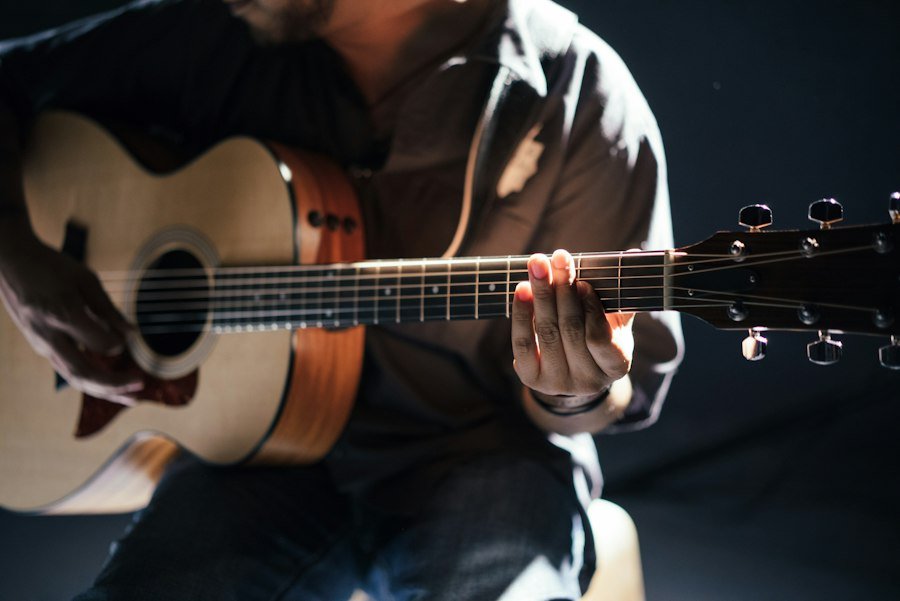

How to Discuss Classical Music in Spanish: 15 Musical Terms
Classical music is a universal language that transcends borders and cultures. It has the power to evoke emotions, tell stories, and connect people from different backgrounds. In the world of classical music, understanding the terminology is crucial for musicians, music enthusiasts, and scholars alike. This article will explore the importance of learning classical music terminology in Spanish, as well as provide an in-depth understanding of various aspects of Spanish classical music.
Table of Contents
ToggleKey Takeaways
- Classical music terminology in Spanish can be complex and challenging to understand.
- Common musical terms in Spanish include “compás” for time signature and “tempo” for tempo.
- Classical music plays a significant role in Spanish culture, with many famous composers and performers.
- Rhythm and tempo are essential elements of Spanish classical music, with unique rhythms like the “habanera” and “bolero.”
- Melody and harmony are also crucial components of Spanish classical music, with influences from Arabic and Jewish music.
Understanding the Basics: Common Musical Terms in Spanish
To fully appreciate and engage with Spanish classical music, it is essential to have a solid understanding of basic musical terms in Spanish. Some common terms include “compás” (beat), “nota” (note), “ritmo” (rhythm), “tempo” (tempo), and “acorde” (chord). These terms are used to describe fundamental elements of music and are essential for communication and interpretation.
For example, when discussing a piece of music, one might say “El compás de esta pieza es de 4/4” (The beat of this piece is 4/4) or “El ritmo de esta canción es muy animado” (The rhythm of this song is very lively). By familiarizing yourself with these basic terms, you will be able to understand and participate in conversations about Spanish classical music more effectively.
The Role of Classical Music in Spanish Culture
Classical music has a rich history in Spain and has played a significant role in shaping Spanish culture. From the medieval period to the present day, Spanish composers have made significant contributions to the world of classical music. Notable composers such as Isaac Albéniz, Manuel de Falla, and Joaquín Rodrigo have left a lasting impact on the genre.
Spanish classical music reflects the diverse cultural heritage of the country, incorporating elements from various regions and traditions. Flamenco, for example, is a style of music and dance that originated in Andalusia and is often incorporated into Spanish classical compositions. By understanding the historical significance of classical music in Spain, you can gain a deeper appreciation for the cultural context in which it was created.
Discussing Rhythm and Tempo in Spanish Classical Music
Rhythm and tempo are essential components of any musical composition, and Spanish classical music is no exception. In Spanish classical music, you will encounter a wide range of rhythms and tempos, each with its own unique characteristics.
For example, the “bolero” is a popular Spanish dance form characterized by its slow tempo and distinctive rhythm. On the other hand, the “fandango” is a lively dance form that features a fast tempo and syncopated rhythms. By familiarizing yourself with these different rhythms and tempos, you will be able to identify and appreciate the nuances of Spanish classical music.
Mastering Melody and Harmony in Spanish Classical Music
Melody and harmony are two fundamental elements of music that contribute to its overall beauty and emotional impact. In Spanish classical music, you will find a wide range of melodies and harmonies that reflect the unique characteristics of the genre.
Spanish classical music often incorporates melodic elements from traditional folk music, such as the use of scales and modes commonly found in flamenco. Harmonically, Spanish classical music often features rich and colorful chords that create a sense of depth and complexity.
For example, the works of Isaac Albéniz are known for their intricate melodies and lush harmonies. By studying the melodies and harmonies found in Spanish classical music, you can gain a deeper understanding of its unique sound and style.
Exploring the Different Forms of Spanish Classical Music

Spanish classical music encompasses a variety of forms, each with its own structure and characteristics. Some common forms include the “zarzuela,” which is a type of Spanish operetta, and the “seguidilla,” which is a traditional Spanish song and dance form.
Each form has its own set of rules and conventions, and understanding these forms is essential for interpreting and appreciating Spanish classical music. By exploring the different forms of Spanish classical music, you can gain a deeper understanding of its rich and diverse repertoire.
The Importance of Dynamics and Expression in Spanish Classical Music
Dynamics and expression are crucial elements in any musical performance, as they allow musicians to convey emotions and tell stories through their playing. In Spanish classical music, dynamics and expression play a significant role in capturing the essence of the music.
For example, in a piece by Manuel de Falla, the dynamics may shift dramatically from soft and delicate to loud and powerful, reflecting the emotional journey of the composition. By paying attention to the dynamics and expression in Spanish classical music, you can gain a deeper appreciation for its emotional depth and complexity.
How to Analyze and Critique Spanish Classical Music
Analyzing and critiquing music is an essential skill for musicians, scholars, and enthusiasts alike. When it comes to Spanish classical music, there are several approaches you can take to analyze and critique the music effectively.
One approach is to analyze the structure and form of the composition, paying attention to how different sections are organized and how they relate to each other. Another approach is to analyze the harmonic progression and melodic development, looking for patterns and relationships between different musical elements.
When critiquing Spanish classical music, it is important to consider factors such as interpretation, technique, and overall artistic vision. By developing your analytical skills, you can gain a deeper understanding of Spanish classical music and engage in meaningful discussions about it.
Tips for Engaging in Spanish Classical Music Conversations
Engaging in conversations about Spanish classical music can be a rewarding experience that allows you to share your passion with others. Here are some tips for effectively discussing Spanish classical music:
1. Familiarize yourself with the repertoire: Take the time to listen to a wide range of Spanish classical music and familiarize yourself with the major composers and compositions. This will give you a solid foundation for engaging in conversations about the genre.
2. Be open-minded and respectful: Remember that everyone has their own opinions and preferences when it comes to music. Be open to different perspectives and be respectful of others’ opinions, even if they differ from your own.
3. Ask questions and listen actively: Engage in conversations by asking questions and actively listening to others. This will not only show your interest in the topic but also allow you to learn from others’ experiences and insights.
4. Share your own experiences and insights: Don’t be afraid to share your own experiences and insights about Spanish classical music. Your unique perspective can contribute to the conversation and spark interesting discussions.
Resources for Further Learning about Spanish Classical Music Terminology
If you are interested in furthering your knowledge of Spanish classical music terminology, there are several resources available to help you on your journey. Here are some recommendations:
1. Books: “A Dictionary of Spanish Classical Music” by Emilio Casares Rodicio is a comprehensive guide to Spanish classical music terminology. “The Music of Spain” by Walter Aaron Clark provides an in-depth exploration of the history and development of Spanish classical music.
2. Websites: The website of the Instituto Nacional de las Artes Escénicas y de la Música (INAEM) provides information on Spanish classical music, including composer biographies, concert listings, and educational resources.
3. Online courses: Platforms such as Coursera and Udemy offer online courses on various aspects of classical music, including Spanish classical music. These courses provide a structured learning experience and often include interactive elements such as quizzes and assignments.
Learning classical music terminology in Spanish is not only important for musicians and scholars but also for anyone who wants to fully appreciate and engage with Spanish classical music. By understanding the basics, exploring the different elements of Spanish classical music, and developing analytical skills, you can gain a deeper appreciation for the genre and engage in meaningful conversations about it. So, take the time to explore the rich and diverse world of Spanish classical music, and let it inspire and enrich your life.
If you want to learn Norwegian, you can register for classes here. We look forward to hearing from you and helping you become fluent in Norwegian.





